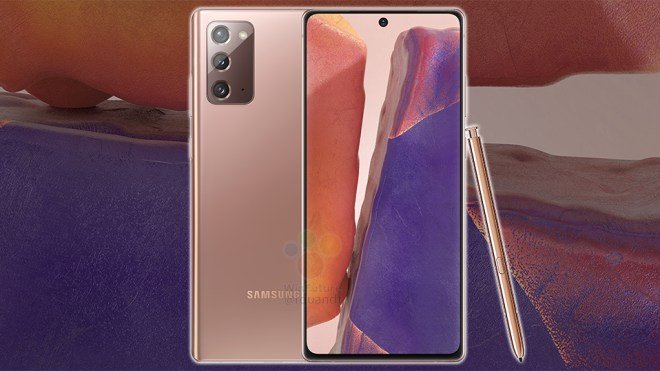The Galaxy Note 20 is already doomed because of the Galaxy S20

Samsung is getting ready to unveil the Galaxy Note 20 series on August 5, and with just over a week to go until the launch, the leaks are coming in thick and fast. A price leak suggests the regular Note 20 will start at €999 in Europe, translating to $999 in the U.S.
That's the same launch price as the standard variant of the Galaxy S20, but there's one problem. Detailed specs of the Note 20 leaked last week, and the phone is set to feature a 6.7-inch AMOLED panel with a 60Hz refresh rate — not 120Hz like the Galaxy S20 series.
It's not immediately evident why Samsung chose to omit the high refresh rate panel on the regular Note 20 when all three variants in the Galaxy S20 series have it as standard. Samsung is also readying a Galaxy Note 20 Ultra variant that has a 120Hz display, but the fact that this key feature isn't coming to the regular Note 20 is inexcusable.
If these specs are any indication, you're better off with the Galaxy S20.
Elsewhere, the Note 20 is touted to feature 8GB of RAM and 256GB of storage, a 12MP primary lens with 12MP wide-angle module and 64MP zoom camera with 30x zoom, and the phone will be powered by the Snapdragon 865 in North America and the Exynos 990 in most global markets. If those specs look familiar, that's because the Galaxy S20 has the exact same hardware. Barring the S Pen and a new design for the rear camera housing that seems to protrude a bit more from the body, you're not really getting anything new with the Note 20.
And that ultimately begs the question: why is Samsung charging $999 for the Note 20? It's understandable for the Galaxy S20 to command such a premium — the 120Hz panel makes a huge difference in day-to-day use — but it does not make any sense to pay that much for a phone with a 60Hz screen.

You only have to look to the OnePlus Nord to see that it is possible to deliver a 90Hz AMOLED display for under $500. While OnePlus' mid-range phone isn't coming to the U.S., it starts off at €399 in Europe, less than half of the Note 20's estimated asking price.
The Note 20 will be upstaged by every other flagship — and a few mid-rangers like the OnePlus Nord.
The Note line was traditionally aimed at power users, with earlier devices in the series often the first to receive the latest features from Samsung. But with the last two release cycles, it was the Galaxy S series that got all the exciting new tech, with the Note line getting the same hardware six months down the line. The Note series is increasingly looking like a boxier version of the Galaxy S lineup, with the S Pen being the sole differentiator.
Get the latest news from Android Central, your trusted companion in the world of Android
To make matters worse, the leak suggests that the base variant of the Note 20 may not have 5G connectivity. The 5G-enabled version is touted to debut at €1,099, and once again, let me remind you that the Nord has 5G connectivity and starts at €399. And before you point out that the Note 20 will have beefier hardware, the model that's sold in most global markets is set to be powered by the Exynos 990, and that particular chipset has its own set of issues.
The regular variant of the Galaxy Note 10 debuted for €949 ($949 in the U.S.) last year, so Samsung must have felt the need to add a €50 price hike for the new cameras. But by leaving out its best feature — the 120Hz display — Samsung has effectively doomed the Note 20 even before the phone is official. I would love to be proven wrong here, but leaks of this nature are usually on the money — particularly a week away from launch. So if you've been holding out for the Note 20, do yourself a favor and get the Galaxy S20 instead.

The right phone at the right price
The Galaxy S20 is loaded with all the features you need in a flagship phone in 2020. You get a gorgeous 120Hz AMOLED screen, the latest Qualcomm Snapdragon 865 chipset with 5G connectivity, exciting new cameras that offer 30x hybrid zoom, and a massive 4,000mAh battery that lasts all day.

Harish Jonnalagadda is Android Central's Senior Editor overseeing mobile coverage. In his current role, he leads the site's coverage of Chinese phone brands, networking products, and AV gear. He has been testing phones for over a decade, and has extensive experience in mobile hardware and the global semiconductor industry. Contact him on Twitter at @chunkynerd.
